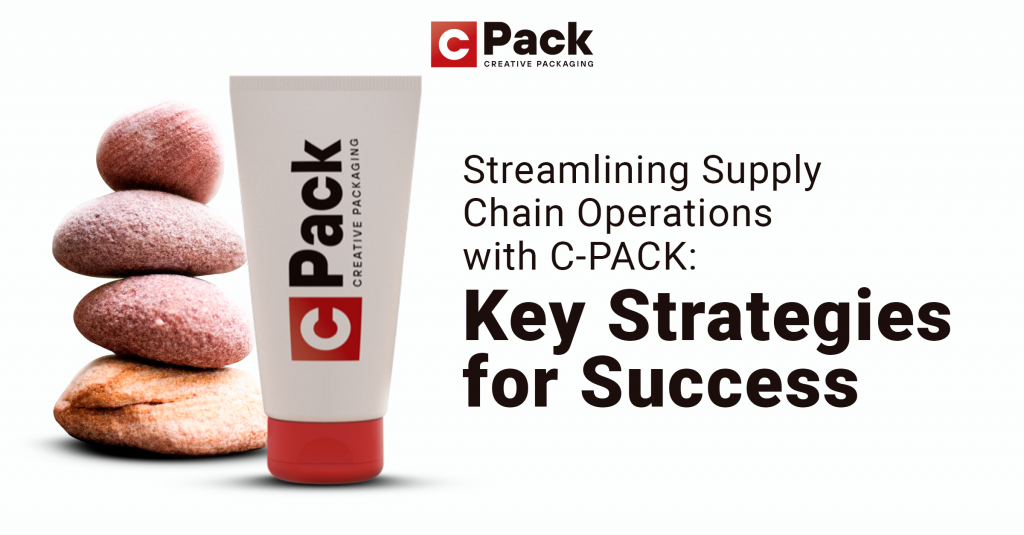
Streamlining Supply Chain Operations with C-PACK: Key Strategies for Success
In today’s fast-paced business landscape, optimizing supply chain operations has become crucial for maintaining a competitive edge. With the advent of technology, innovative solutions like C-PACK have emerged, revolutionizing the way companies manage their supply chains. In this article, we will explore the key strategies for streamlining supply chain operations using C-PACK, a game-changer in the industry.
Introduction to C-PACK
C-PACK, short for Connected Packaging, is a cutting-edge system that integrates IoT technology into product packaging. It enables real-time tracking, monitoring, and communication between products, suppliers, manufacturers, and consumers throughout the supply chain journey.
Enhancing Visibility and Transparency
One of the primary challenges in supply chain management is the lack of real-time visibility. C-PACK addresses this by providing instant updates on product location, condition, and expected delivery times. This transparency minimizes delays and optimizes inventory management.
Demand Forecasting and Inventory Optimization
Efficient inventory management relies on accurate demand forecasting. C-PACK utilizes data from various touchpoints to provide insights into consumer preferences and buying patterns. This data-driven approach enables businesses to optimize inventory levels and reduce overstocking or stockouts.
Streamlining Distribution and Logistics
C-PACK’s real-time tracking abilities offer immense benefits to distribution and logistics. It allows companies to monitor shipments, reroute deliveries if necessary, and ensure timely arrivals. This reduces transportation costs and enhances customer satisfaction.
Preventing Counterfeiting and Ensuring Quality
Counterfeit products can significantly damage a company’s reputation and revenue. C-PACK incorporates anti-tampering features and QR codes for authentication, ensuring that only genuine products reach consumers. Additionally, it tracks temperature and humidity, guaranteeing product quality during transportation and storage.
Embracing C-PACK requires a well-planned implementation strategy to ensure its success in streamlining supply chain operations. Here are some steps to consider:
Assessment and Customization: Begin by assessing your current supply chain processes and identifying areas that require improvement. Customize the C-PACK solution to align with your specific needs and objectives.
Collaboration and Training: Collaboration among departments and partners is vital. Provide comprehensive training to employees and partners involved in using C-PACK, ensuring everyone understands its functionalities and benefits.
Data Security and Integration: As C-PACK involves data sharing across various stakeholders, prioritize data security measures. Implement robust encryption protocols and ensure seamless integration with your existing supply chain management systems.
Pilot Testing and Feedback: Before full-scale implementation, conduct pilot tests to identify any potential issues or challenges. Gather feedback from all stakeholders and make necessary adjustments to optimize the system.
Continuous Monitoring and Improvement: C-PACK is not a one-time solution. Continuously monitor its performance and gather data to measure its impact on efficiency and cost savings. Regularly update the system to adapt to changing business needs.
In conclusion, C-PACK presents a transformative opportunity for businesses to revolutionize their supply chain operations. By leveraging real-time data, enhanced visibility, and seamless communication, companies can achieve higher efficiency, lower costs, and improved customer satisfaction. Embracing C-PACK requires careful planning, collaboration, and ongoing monitoring, but the benefits are undoubtedly worth the effort. Stay ahead in the competitive market by streamlining your supply chain with the power of C-PACK.
Common questions asked about Streamlining Supply Chain
What is C-PACK and how does it streamline supply chain operations?
C-PACK, or Connected Packaging, is an innovative system that integrates IoT technology into product packaging. It facilitates real-time tracking, communication, and monitoring of products throughout the supply chain journey. This technology enhances visibility, minimizes delays, optimizes inventory management, and promotes seamless communication between suppliers, manufacturers, and consumers.
How does C-PACK enhance transparency in supply chain operations?
C-PACK enhances transparency by providing real-time updates on product location, condition, and estimated delivery times. This transparency allows businesses to closely monitor the movement of goods, anticipate potential disruptions, and make informed decisions. It reduces uncertainties and fosters collaboration among supply chain partners.
Can C-PACK help with demand forecasting and inventory management?
Yes, C-PACK can significantly aid demand forecasting and inventory management. By collecting and analyzing data from various touchpoints, C-PACK provides insights into consumer preferences and buying patterns. This data-driven approach enables businesses to optimize inventory levels, reduce excess inventory costs, and prevent stockouts, ultimately leading to more efficient supply chain operations.
How does C-PACK contribute to preventing counterfeiting and ensuring product quality?
C-PACK incorporates anti-tampering features and QR codes for product authentication. This helps prevent counterfeit products from entering the supply chain, protecting a company’s reputation and revenue. Additionally, C-PACK monitors environmental factors such as temperature and humidity, ensuring that products maintain their quality during transportation and storage.
What steps should businesses take when implementing C-PACK for supply chain optimization?
Implementing C-PACK successfully requires a structured approach:
- Assessment and Customization: Evaluate existing processes and customize C-PACK to meet specific needs.
- Collaboration and Training: Foster collaboration among departments and partners, offering comprehensive training to ensure everyone understands the system.
- Data Security and Integration: Prioritize data security measures and integrate C-PACK seamlessly with existing systems.
- Pilot Testing and Feedback: Conduct pilot tests, gather stakeholder feedback, and refine the system accordingly.
- Continuous Monitoring and Improvement: Regularly assess C-PACK’s performance, adapt it to evolving business needs, and refine its functionalities for optimal results.

